page 1
~ The Study of Threes ~
http://threesology.org
The following are references culled from other websites regarding the number 3 or have "three" as a focus, though other labeling may be used. Please give all respective authors their due credits. Links to their websites are provided following each section. However, it must be noted that many of the links may not be viable since some of the information was compiled in 2004 or earlier, unless otherwise noted.
--- Designed Intelligence ---
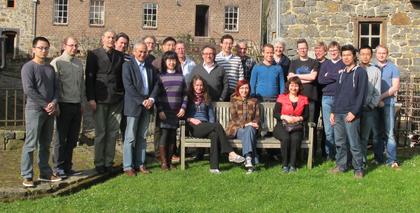
"Improving Quality of Life through Designed Intelligence"
The Designed Intelligence (DI) group focuses on the design of intelligent systems, products and services that are characterized by three main aspects:
- Sensor based input
- Context awareness and adaptive signal processing
- Actuator controlled output.
The DI group investigates the software and hardware architecture, and provides the necessary technical expertise to design and build such kind of systems. Most of the DI researchers have a strong background in electrical engineering, mechanical engineering, computer science, and human-system interaction design.
The DI research approach is a particular form of research through design. Industrial design research should be problem-oriented and design-oriented, based on respect for people and society in general. It should also be of sound scientific state of art. This idea of problem and design orientation has to do with the strong feeling that systems, products and services should address society's problems, and that technology offers great design opportunities to be exploited. Compared to more traditional disciplines like mechanical engineering, electrical engineering and computer science, this means that the DI group tries to pay more attention to peoples' actual needs. DI research and design are not focused on one specific technology. The DI group favours a multidisciplinary design approach.
The DI group concentrates on the following three research areas:
- Autonomous Systems (i.e. autonomous robots, embodied intelligence, human-robot interaction, mental modelling)
- Adaptive Systems (i.e. bio-signal processing and modelling, learning algorithms, smart material, smart sensors)
- Aware Environments (i.e. cultural computing, dynamic processes, medical applications, sensing behavior)
How can the DI group design useful and meaningful dynamic forms of the behaviour of intelligent systems, products and related services?
Contact... E. KonijnenbergTelephone: 040 - 247 2394
E-mail: E.Konijnenberg@tue.nl
Gleaning Insights from Organizational Development Thought Leaders
Thinking in Threes
February 3, 2011
- Centralize vs. decentralize.
- Authoritative decisions vs. Consensus-based decisions.
- Top-down vs. Bottom up change.
How many times do people in organizations get stuck thinking that there are only two variables in any one organizational challenge? Worse yet, how often do people try to negotiate the distance between the variables by finding some type of middle ground, only to find that it too is insufficient?
presents a model of organizational design trade-offs in his book:
--- Seeing Organizational Patterns ---
He argues that the way we organize should be intentional and consider three variables:
- Control,
- Autonomy
- Coordination
This model was a revelation to me when I first discovered it. For the first time, it seemed to so clearly diagnose how at times organizational strategy, design, and processes can seem schizophrenic and disconnected. It has the potential to help us call into question what we truly want people to do and be rewarded for in organizations. The model posits no "right" or "best" answers, but rather a set of trade-offs that must be considered for aligning behavior in organizations.
I can clearly remember reading the corporate strategic priorities of one of my former employers. At the highest level, the goals were organized autonomously, by the various lines of business that represented the whole company. The achievement of each of these goals would depend on that particular product line’s market, changing consumer demand and preferences, local operating environment, and the leadership at an operational and tactical level to design, produce, and market the products. However, in parallel to these goals were other strategic priorities which emphasized, simultaneously, creativity and ingenuity (coordination), efficiency and cost reduction (control), and teamwork and sharing of best practices across the businesses (autonomy/ coordination). Reading these priorities, it became clear that the company did not truly know, or at least failed to articulate, what the most important goals were for employees. The result was a lot of discussion, debate, and often times confusion about where to direct energies. In the end, what got measured is what got done, and only studying the metrics could employees deduce the true priorities.
I can imagine using this model to help organizations think about what type of culture they have, and what type of culture they would like to move towards. It would be an aid in evaluating the major systems within that culture to see what is in alignment and what may need to be re-examined or tweaked. For example, consider an established organization in a mature market. In order to survive, it may need to look at ways to innovate its business and grow outside its traditional market niche. In other words, it may need to move closer to coordination to allow some of the freedom, creative ideas, and ingenuity of its workforce to take hold and grow. However, if this organization doesn’t pay attention to its reward systems, both formal and informal, or fails to provide the support, technology, and resources to try new things, the experiment will fail. A friend of mine talks about this as stretching the rubber band, only to have it snap back to its original shape.
I challenge the readers to think about a current challenge or issue in their organizations. Could applying this model help you think about what forces are at play, that could either help or hinder overcoming the challenge? What needs to be examined, tweaked, modified, or clarified to make the situation better?
Keidel tells us that thinking in threes can help us overcome one or two dimensional solutions to problems that don’t ever seem to help. He also says that once we get used to looking for the triangular relationships within a situation, new insights open up to us and help re-frame our thinking. Practice thinking in threes and see what new patterns, insights, and solutions emerge for you.
 3 is a
--- Prime number ---.
3 is a
--- Prime number ---.3 is a --- Triangular number --- = 1 + 2
3 is a --- A Fibonacci number --- : 1, 3, 4, 7, 11, 18, 29...
3 is a --- A Lucas number ---.
3 is related to: triad, triplet, trio, tern or hat-trick...etc.
Tri means three. So triangles have three sides, tripods have three legs and the dinosaur Triceratops had three horns. The French flag is a tricolor because it has three colors. Trigonometry is a branch of mathematics based on measuring triangles.

3 triangles used in the United Kingdom's M.O.T. sign. (M.O.T. is an acronym from a previous time when the United Kingdom's Department of Trade and Industry [DTI] was called the Ministry of Transport.)
- 3-dimensional means that something has length, width and depth.
- 3 school terms in a year (United Kingdom).
- 3 times repeated: Oath reciting tradition.
- 3-legged race: is a race run by two people each with a leg tied to their partner's.
- 3 lines in letters: AFHKNYZ
- 3 barley-corns in an inch, three feet in a yard, and three miles in a league. Barley-corns and leagues are some old imperial units of length which are no longer used today.
***Once upon a time there were three little pigs ... three Billy goats gruff ... etc.
Stories often begin this way and have a similar structure. Number one and number two are always similar so the listener is lulled into believing number three will be the same. But with number three there is a twist in the tale.
***With just a ruler and a pair of compasses, it is possible to divide any angle exactly in half. This is called bisecting an angle. But is it possible to trisect an angle - to divide it in three - using just a ruler and compasses? Hundreds of people have spent hundreds of hours trying to discover a way to do this, without realizing that it has been proved to be impossible... (or is it?)
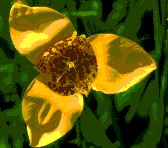
3-fold symmetry exists in the tiger flower (Tigridia pavonia). If the number of petals on a flower is a multiple of three, it is probably from a group of plants called the monocotyledons which includes crocuses, daffodils, tulips, lillies and other plants grown from bulbs.
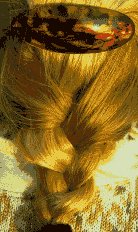
3 interwoven hair strands originally meant a plait or pigtail commonly called a tress of hair.
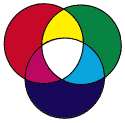
***Most colors can be mixed from just three primary colours. But different primary colors are used for different purposes. For example, all the colors you see on a television screen are mixtures of red, green and blue light. With paint you can mix most colors from just red, yellow and blue pigments. The colours in books and magazines are usually printed from three coloured inks: cyan, magenta and yellow, although black ink is used as well.
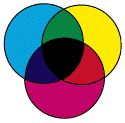
*** We use three primary colors because of the way our eyes work. At the back of our eyes are cells called cones which are sensitive to coloured light. There are three different types of cone, each sensitive to different wavelengths of light. If our eyes were built differently and we had four types of cone cell, we would need to use four primary colors in printing, painting and television. Mixing colors from red, green and blue is typically seen on a television screen, and mixing colours from cyan, magenta and yellow is commonly seen in the printing of a book.
© Cambridge University Press, University of Nottingham & Richard Phillips 1994/1999.
http://www.nottingham.ac.uk/education/number/Num3.htm
Lots of things work or come in threes!
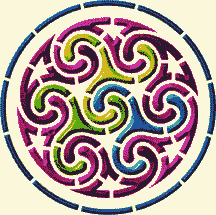
grandmother, mother, daughter / me, myself and I
the Holy Trinity (Father, Son, and Holy Spirit)
parent, adult, and child (TA) / the three Wise Men
gold, frankincense and myrrh / small, medium, and large
snap, crackle, and pop / red, white, and blue
id, ego, super-ego
Three-Mile Island
third planet from the Sun
- Alexander Graham Bell
- John Wilkes Booth
- William Jennings Bryan
- George Washington Carver
- Nat King Cole
- Anthony Michael Hall
- Billy Jean King
- Coretta Scott King
- Martin Luther King (Jr.)
- Lyndon Baines Johnson (LBJ)
- James Earl Jones
- John Paul Jones
- John Fitzgerald Kennedy (JFK)
- Mary Stuart Masterson
- Mary Elizabeth Mastrointonio
- Gina Lee Nolin
- Sandra Day O'Connor
- Lee Harvey Oswald
- Lisa Marie Presley
- Edgar Allan Poe
- Mary Lou Retton
- Gail Metcalf Schartel
- David Ogden Stiers
- Franklin Delano Roosevelt (FDR)
- Jan Michael Vincent
- Babe Didrickson Zaharias
- three's a crowd
- third time's a charm
- see no evil, hear no evil, speak no evil
- and on the third day...easy as 1-2-3
- eazy- peezy- japaneezy
- chinese- japanese- American knees
- strike three--you're out!
- there are 3 sides to every story--yours, mine and the truth
- ...and baby makes three (1 + 1 = 3)
- Everything that happens once can never happen again. But everything that happens twice will surely happen a third time. (Arabic proverb)
Rob / Mel / Van / Cal / Jon / Bob / Gus
Hal / Jim / Abe / Len / Pam / Sal / Ian
Kay / Ken / Amy / Dot / Gay / Joy
- Three Men and a Baby
- The Three Amigos
- Three Coins in a Fountain
- From Noon Till Three
- The Three Musketeers
- My Three Angels
- Third Rock from the Sun
- (3) Charlie's Angels
- (Three of) the Mod Squad
- My Three Sons
- Kukla, Fran and Ollie
- Three's Company
- Bonanza- (Father and 3 sons)
- Wednesday Morning, 3 A.M. (Simon & Garfunkel album)
- Three Blind Mice (children's song)
- Lions and Tigers and Bears (expression used in the movie "Wizard of Oz")
- Three Coins in a Fountain
- The Three Bells (by The Browns)
- Knock three times on the ceiling
- Three Times a Lady (by the Commodores)
- The only triple-header in baseball history was played on October 2, 1920, as the Cincinnati Reds took 2 out of 3 games from the Pittsburgh Pirates.
- Tri- means 3. So triangles have 3 sides, tripods have 3 legs and the dinosaur Triceratops had 3 horns. The French flag is a tricolor because it has 3 colors. Trigonometry is a branch of mathematics based on measuring triangles.
- Three-dimensional means that something has length, width and depth.
- Oaths are traditionally repeated 3 times.
- A three-legged race is run by 2 people each with a leg tied to their partner's.
- The letters A; F; H; K; N; Y; and Z are all made up of 3 lines.
- A "monkey-flush" is 3 cards in a poker hand of the same suit, usually not in sequence.
- With just a ruler and a pair of compasses, it is possible to divide any angle exactly in half. This is called bisecting an angle. But is it possible to trisect an angle--to divide it in 3--using just a ruler and compasses? Hundreds of people have spent hundreds of hours trying to discover a way to do this, without realizing that it has been proved to be impossible.
- If the number of petals on a flower is a multiple of 3, it is probably from a group of plants called the monocotyledons which includes crocuses, daffodils, tulips, lilies and other plants grown from bulbs.
- Sammy Cahn’s Three Coins in the Fountain won the Oscar in 1954.
- A goldfish has a memory span of 3 seconds.
- The Third Reich was so named by Adolf Hitler as a link to the glory of Germany’s past. ("Reich" is German for empire.) The first Reich was the medieval Holy Roman Empire, which united much of what is now Germany and Italy. Otto Von Bismarck created the second in 1871. The Fuhrer promised that his Third Reich would last 1,000 years, but it died along with the "master race" in 1945, in the ruins of Berlin after a mere 12.
- Trilemma - A situation offering 3 undesirable options.
How about a lively little song about 3 fishes?
Tune: "Three Blind Mice"
Three shiny fish, three shiny fish,
See how they swim, see how they
swim.
Their tails go left and their tails go right,
Their gills breathe
for them day and night,
Did you ever see such a slippery sight
As three
shiny fish?
--Barbara Dunn
http://www.umkc.edu/imc/3_list.htm
|
Lately, I've been thinking about things in three. Of triads and trilogies and how good and bad things all come in threes. Our myths and science throughout the ages have had much to say about the mystery of the number three. Our stories have beginnings, middles and endings just as our lives play out in the phases of youth, middle & old-age. In our three dimensional physical world matter exists in a solid, liquid or gaseous state. Even the great mystery of time itself exists in the past, present and future. And within time--in the present moment that is but an instant in the vast expanse of past and future--music lives. We tend to think of the world as binary. And it remains true that dualities and polarities can aptly describe all things in the world, as yin and yang, on and off, everything and nothingness. But in between there exists a middle point, or moment of transition. At this point of juncture, however infinitesimally small, yin and yang coexist as equals; both present but neither present. At this time, the weightless inertia of the righting moment, things can go either way. At this point, our decisions really count. In the context of this trio ensemble, the musical trinity of melody, harmony and rhythm take up the eternal dance. From beginning to middle to end, we seek the moments of transition between the classical musical forms expressed conventionally as dualities: Tension and Release But listen for the spaces in between these opposites, when the music begins to change, but where it has not yet transformed, where it is simultaneously both and neither. |
|
|
This is one of the most common structures in Western ideography.
The signs The sign In some modern military contexts it indicates AIR TRANSPORTATION, and in art it is a common (pictorial) sign for a FLYING BIRD. Turned upside down, |
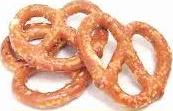

And let us not forget the usage of this symbol in religion such as the Om, or (in an extension of this through a process of overlapping), the characteristic three-hole configuration of twisted pretzels which has been suggested to have its origin as a symbolically religious representation of crossed arms while in prayer. Additionally, it can be seen to portray a simplistic resemblance to the breasts, buttocks, and other anatomical features, depending on from what angle the image is placed, how large the image is sketched, and what color(s) are used. | |
Latest Updated Posting: Sunday, 14-August- 2022... 10:02 AM
Herb O. Buckland
herbobuckland@hotmail.com